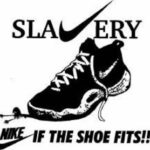As United States businesses continue expanding globally, one area of concern are human rights issues for foreign workers. Many foreign countries have had long standing issues with human rights, especially when it comes to child labor laws.
The International Labor Office claims that 25 percent of children between the ages of 10 and 14 are working not only in Asia but even in parts of Western Europe.” De George (2006). In the effort to increase profitability and expand American businesses internationally, we must be aware that many foreign countries exploit children, forcing them to work in “sweatshop” conditions.
In the United States, it is not uncommon for teenagers to find employment, especially during the summer vacation from school. In the United States it is not unusual for young teenagers to get part-time jobs after school, or for young boys to mow a neighbor’s lawn or young girls to baby-sit a neighbor’s young children.” De George (2006). However, this common practice in the United States is a far cry from working conditions found for children in some foreign countries. Such conditions include, “when they are very poorly paid and forced to work in unsafe conditions or at work that is damaging to their health. It is labor of this type that is typically referred to as “child labor.” De George (2006).
The United States has clear Child Labor laws. The “Fair Labor Standards Act of 1938” banned oppressive child labor. There are minimum age requirements for children to be allowed to do work in hazardous job duties. The minimum age requirement for children to work in the United States is 16. Oppressive child labor in the United States can be defined as employing a person under the age of 16 or employing a person between the ages of 16 and 18 in an occupation the Secretary of Labor has deemed to be hazardous, such as working with explosives, roofing, and coal mining. Stiff penalties for breaking child labor laws in the United States exist including civil penalties for up to $11,000 for each violation. Lawyers.com. (n.d.).
Working conditions for children in underprivileged nations are sometimes deplorable. ” Child labor is found primarily in poor, developing countries. In part this is a result of the lack of funds for adequate schools. In some cases girls are discriminated against and only boys go to school.” De George (2006.) Even though the problem was not created by American companies expanding their operations overseas, “it is important to note that the problem existed in those countries in which it is found before multinationals arrived there, and that the problem is not one that was created by multinational corporations ” De George (2006). ” it is one that corporations should take into consideration when making the decision about what countries will be considered when expanding their operations globally.
If a corporation does expand into a country with child labor issues, care must be taken when making decisions regarding excluding child labor. Some families are in such poor economic situations that they depend upon the parents and children’s incomes just to survive. ” If a multinational wishes to use a supplier that uses child labor, one approach would be for the multinational to insist that the children be fired before any contract is signed. This, it would seem, keeps the hands of the multinational clean. But what happens to the children who are fired? In many cases their lot and that of their families is worsened, rather than improved.” De George (2006).
“In 1997, the U. S. government placed a ban on the importation of goods made by child labor in bondage.” De George (2006). We are working as a nation with international child labor foundations and striving to prevent unfair labor practices for children. The International Labor Organization (ILO) is one such organization. “The International Labor Organization (ILO) monitors child labor throughout the world and has campaigned for countries to adopt measures that would reduce and eventually eliminate such labor.” De George (2006).
“High profile cases, such as Nike and Wal-Mart, have brought the issue of child labor and multinationals to the attention of both American multinationals and the general public.” De George (2006). Wal-Mart, from the years of 1995-1998 was accused of using child labor in several foreign countries including China, Indonesia, and Pakistan. Sweatshop conditions were said to exist in these foreign countries for children who were employed.
Sweatshop conditions can be defined as deplorable working conditions such as “old buildings, with poor or little ventilation, poor sanitary facilities, and unsafe, unhealthy and crowded working conditions. They pay very low wages for long hours of work and the workers have no rights within them. They receive no benefits, and are often subject to physical and verbal abuse and sexual harassment or worse.” De George (2006).
A company can ill afford the publicity of making and selling products purchased from countries with such deplorable child labor conditions. A documentary was produced about the accusations against Wal-Mart entitled, “Wal-Mart: The High Cost of Low Price.” Wal-Mart seems to be “mending their ways” and in 2004 began working with a group called “Business for Social Responsibility” who works in monitoring overseas working conditions. Berner (2005).
What should United States businesses do regarding expanding into countries with child labor issues? We must remain a country of ethics and stand our ground as a leader in human rights. “What is required in addition is a raising of consciousness on the part of workers and of the general population in those countries, and the passage and enforcement of appropriate legislation.” De George (2006). Only by setting the example for the rest of the world in not using illegal child labor will the United States remain a moral leader in the global market place.
Sources:
Danger: Children at Work,” Futurist, 27, no. 1 (January'”February 1993), pp. 42′”43. See also Martha Nichols, “Third-World Families at Work: Child Labor or Child Care?,” Harvard Business Review, 71, no. 1 (January'”February 1993), pp. 12′”23. “Slavery,” Newsweek, May 4, 1992, pp. 30′”39.
Lawyers.com. (n.d.). Child Labor under the Fair Labor Standards Act. Retrieved August 30, 2009, from http://labor-employment-law.lawyers.com/wage-and-hour-law/Child-Labor-under-the-Fair-Labor-Standards-Act.html
De George, Richard T. (2006). Business Ethics. , : Prentice Hall, Inc..
Wikipedia, . (2005). Wal-Mart: The High Cost of Low Price. Retrieved August 30, 2009, from http://en.wikipedia.org/wiki/Wal-Mart:_The_High_Cost_of_Low_Price
Berner, Robert. Can Wal-Mart Wear a White Hat?.” Business Week. September 22, 2005. Retrieved on August 30, 2009.



